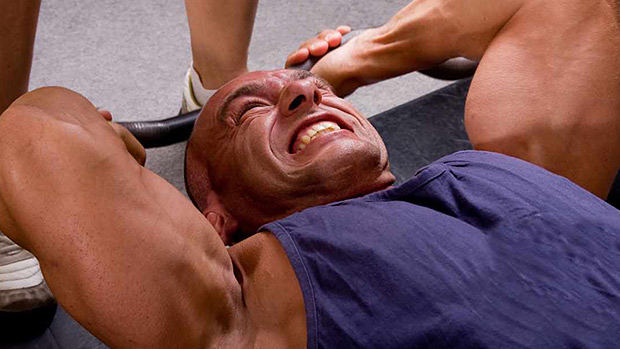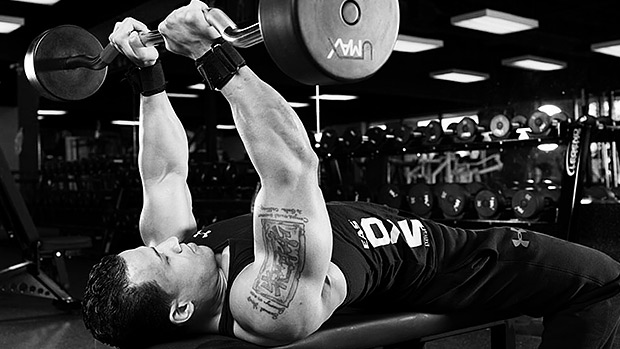Lifters who obsess over form – like doing full-range reps – are in for a comeuppance if they believe the results of a Japanese study that showed that partial reps were responsible for almost a 50% increase in triceps cross-sectional area.
The researchers divided 44 resistance-trained men into two groups. Each group performed lying triceps extensions with a barbell three times a week for 8 weeks.
The first group did conventional triceps extensions with a full elbow range of 0 degrees to 120 degrees. The second group did the same exercise, but using a limited elbow range of 45 degrees to 90 degrees. Each group did 3 sets of 8 reps for each workout.
The researchers tracked the growth of the cross sectional area (CSA) of the triceps, in addition to measuring the oxygenation of the muscles being worked, blood lactate concentration, and the electromyographic response.
The men that worked only the middle range of the lying triceps extensions increased the CSA of the triceps by 48.7% (plus/minus 14.5) while the men who did full range-of-motion triceps extensions increased cross-sectional area by 28.2% (plus/minus 10.9).
In other words, the guys who used partial reps had results that were about 20% better than the full-rep guys, and that's huge.
"Furthermore," concluded the scientists, "during the PRE (partial rep) program, a positive correlation was detected between the percent increase in CSA and area under the Oxy-Hb curves before and after the 8-week exercise training."
What that means is that the guys who were doing partial reps created a greater degree of intramuscular hypoxia in their triceps than the guys doing full-range reps.
By doing partial reps, the trainees were accomplishing the same thing as those guys who wrap elastic bands around their muscles while doing sets. The pressure causes capillary restriction, which leads to poor oxygen exchange, an additional build-up of lactic acid, and a subsequent growth hormone surge, or so the thinking goes.

While the results of this experiment were pretty compelling, there are a couple of things you need to take into consideration before you start partial-repping your whole workout.
For one thing, weight-bearing and non-weight-bearing muscles probably react differently to exercise. Specifically, partial reps might work for triceps, biceps, lats, shoulders, and chest, i.e., upper body muscles, but might not work for legs. In fact, other studies have confirmed that the legs respond better to full range-of-motion exercises.
Secondly, the trainees used in the study were fairly experienced lifters, each with at least a year of training behind them. It could simply be that doing partial reps represented a new training stimulus, one whose effects might wane with time.
While there's undoubtedly some validity to the previous point, you can't ignore the effects partial-rep training had on the oxygenation (or lack thereof) of the triceps. Partial reps, particularly when done after a series of full-range reps, definitely lead to some temporary intramuscular hypoxia. As such, training with partial reps is a lot different than just changing the angle of the lift, the weight used, or the number of reps done.
If you want to take this type of training out for a spin, I recommend you try the method Paul Carter described in The 10-6-10 Method for Size. In it, he recommends doing a set this way:
- A 10-second isometric hold.
- Follow it immediately with 6 full range-of-motion reps done at a slow tempo (lowering the weight over 3-5 seconds).
- Follow that immediately with 10 partial range-of-motion reps.
While Carter didn't come up with the method in response to this study, it not only employs the partial rep method, it possibly intensifies the effect by causing an even greater degree of intramuscular hypoxia, thus potentially leading to further growth.
- Goto M et al. Partial range of motion exercise is effective for facilitating muscle hypertrophy and function via sustained intramuscular hypoxia in young trained men. J Strength Cond Res. 2019 May;33(5):1286-1294. PubMed.





